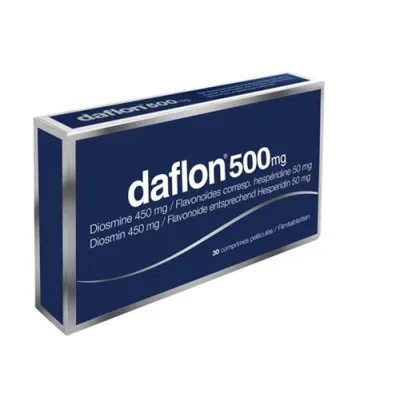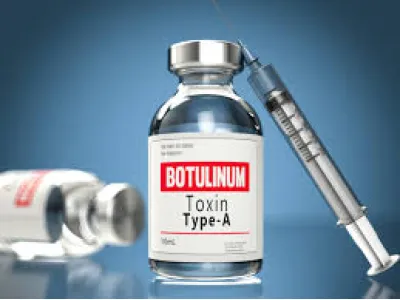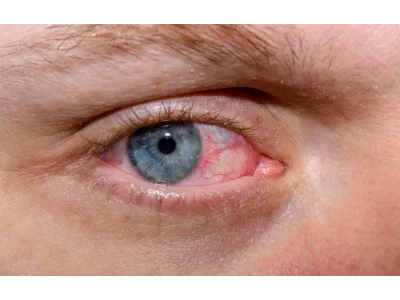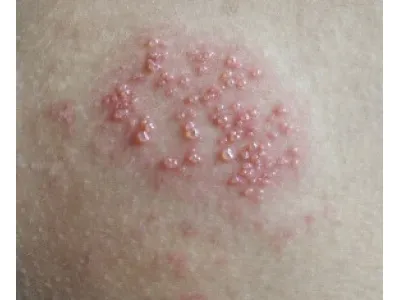Managing Chronic Venous Insufficiency: Symptoms, Causes, and Treatments

Chronic venous insufficiency (CVI) is a common medical condition that affects the veins in the legs, resulting in impaired blood flow back to the heart. This condition causes a number of unpleasant symptoms that affect daily life and general well-being. Understanding the symptoms, causes, and available treatment options is critical to effective treatment of CVI. By recognizing the early signs and seeking appropriate medical care, people can ease discomfort and prevent the condition from progressing.
What is Chronic Venous Insufficiency
Chronic venous insufficiency (CVI) is a condition in which the leg veins cannot return blood to the heart effectively. Normally, veins have one-way valves that prevent blood from flowing back as it travels up toward the heart. With CHD, these valves are damaged or weakened, causing blood to pool in the legs. This build-up ends up increasing the pressure in the veins, which can cause various symptoms and complications.
CVI develops gradually and depends on age, genetics, prolonged standing or sitting, obesity and pregnancy. People with CVI often experience symptoms that include swelling, pain, and heaviness in the legs, as well as visible varicose veins. In more severe cases, CVI can lead to skin changes and ulcers.
How Chronic Venous Insufficiency Develops
Chronic venous insufficiency (CVI) develops due to a combination of venous blood flow problems and structural changes in the veins. The most important physiologic factors associated with CVI are valvular dysfunction and venous wall weakness.
Valve dysfunction
In healthy veins, venous circulation depends on one-way valves that keep blood moving to the heart. These valves open to allow blood to flow and close to prevent blood from backing up. However, when these valves are damaged or weakened, they fail to close properly. This dysfunction leads to pooling of blood in the veins, which is called chronic venous insufficiency.
Weakness of venous walls
Another decisive factor in the development of CVI is the weakening of the venous walls. The veins in the legs must withstand considerable pressure as they work against gravity to return blood to the heart. Over time or due to genetic factors, the walls of these veins can lose their elasticity and strength. This weakness contributes to the expansion and stretching of the veins, further increasing the dysfunction of the valves and worsening the condition of the vessels.
Common Symptoms
Chronic venous insufficiency (CVI) is manifested by various symptoms that appreciably affect everyday life. Recognizing these symptoms in the early stages leads to more effectiveness. Here is a overview of common symptoms related to CVI:
- Swelling of the legs: One of the most commonplace signs of CVI is swelling of the legs, in particular the lower legs and ankles. This swelling, additionally called edema, is because of the accumulation of fluid in the tissues because of impaired venous return. Swelling is frequently worse after extended durations of standing or sitting and may decrease after raising the legs.
- Pain and heaviness: People with CVI regularly experience pain or heaviness of their legs. This discomfort is usually more mentioned after prolonged standing or sitting and is decreased with the aid of raising the legs or bodily activity. The ache ranges from moderate to a more intense throbbing sensation that influences daily activities and mobility.
- Skin changes: The skin may additionally seem reddish-brown or dark due to leakage of blood from the veins into the surrounding tissues. Also, the affected regions of the skin grow to be dry, flaky and itchy. Over time, the skin can thicken and become hard, a circumstance known as lipodermatosclerosis. In severe cases, CVI can lead to the development of venous ulcers, which are open sores that are difficult to heal and at risk of infection.
Treatment Options for Chronic Venous Insufficiency
Effective treatment of persistent venous insufficiency (CVI) involves an aggregate of way of life changes, medication, and sometimes surgery. Here are some basic strategies and treatments to relieve symptoms and improve overall vascular health:
- Regular exercise: Exercise allows enhanced venous flow, encouraging blood waft to the coronary heart and lowering blood pooling in the legs. Activities inclusive of taking walks, swimming and cycling are in particular beneficial. The sporting activities give a boost to the calf muscle groups, which act as a pump that promotes blood float in the veins.
- Weight control: maintaining a normal weight is important to reduce the pressure at the leg veins. Being obese can increase pressure at the veins, making signs of CVI worse. A balanced diet and regular exercise can help you achieve and maintain a wholesome weight, promoting better vascular health and overall properly-being.
- Leg elevation: Elevating your legs above heart level several times a day can significantly lessen swelling and enhance blood waft. This easy practice enables lessen strain in the veins, stopping blood from pooling in the lower extremities. It is mainly powerful in aggregate with different methods of treating venous insufficiency.
- Phlebotonic: Phlebotonics are designed to enhance vein tone, relieve inflammation and increase lymph flow. These medications can help relieve symptoms including swelling, ache, and heaviness in the legs. Phlebotonics are frequently used as part of a comprehensive remedy plan for venous insufficiency.
Pay interest to Daflon 500, which contains substances with strengthening and protective properties that have a beneficial effect on the treatment of some diseases of blood vessels. Daflon is used to treat disorders of venous circulation, edema and hemorrhoids.
Daflon film-coated tablets 500 mg 30 pcs
Daflon 500 mg contains substances with strengthening and protective properties that have a beneficial effect on the treatment of certain diseases of the blood vessels. Daflon 500 mg is used to treat venous circulatory disorders, edema and hemorrhoids. Swissmedic-approved patient informationDaflon 500 mg Servier (Suisse) SA What is DAFLON 500 mg and when is it used? Daflon 500 mg contains Substances with strengthening and protective properties that have a beneficial effect on the treatment of certain blood vessel diseases. Daflon 500 mg is used to treat venous circulatory disorders, edema and hemorrhoids. What should be considered?Follow the recommendations of your doctor, not only with regard to prescriptions, but also with regard to gymnastics and wearing support stockings ( stockings for varicose veins). When must DAFLON 500 mg not be used?Suspected or known hypersensitivity (allergy) to the flavonoid fraction or one of the excipients of daflon 500 mg or other flavonoids. When is caution required when using DAFLON 500 mg?If used as directed, no special precautions need to be followed. Itell your doctor, pharmacist or druggist if you: suffer from other diseaseshave allergiestake other medicines (including those you bought yourself!) or use them externally!Can DAFLON 500 mg be used during pregnancy or breastfeeding?As a precaution, it is better to avoid taking the drug during pregnancy. Since there are no data on excretion in breast milk, breastfeeding is not recommended during the treatment period. Ask your doctor, pharmacist (or druggist) for advice if you think you may be pregnant or planning to have a child. How do you use DAFLON 500 mg?Adults: The usual dose is 2 tablets a day (one tablet at midday and one tablet in the evening) before, during or after meals a glass of water. Time and type of meals do not affect the effectiveness of the drug. The use and safety of daflon 500 mg in children and adolescents has not yet been tested. Stick to the dosage given in the package leaflet or as prescribed by your doctor. If you think the medicine is too weak or too strong, talk to your doctor, pharmacist or druggist. If you have taken more daflon 500 mg film-coated tablets than you should, contact your doctor or pharmacist immediately or experience with an overdose of daflon 500 mg is limited. The most commonly reported symptoms of overdose are diarrhea, nausea, abdominal pain, itching and rash. What side effects can DAFLON 500 mg have?The following side effects can occur with daflon 500 mg, but they do not occur in every case. The following side effects may occur in descending order of frequency: Common (affects 1 to 10 users in 100)Diarrhoea, indigestion, nausea, vomiting Uncommon (affects 1 to 10 users in 1000)ColitisRare (affects 1 to 10 out of 10,000 users)Dizziness, headache, feeling unwell, skin rash, itching, hives. Individual casesAbdominal pain, isolated edema of the face, eyelids or lips. In exceptional cases, Quincke's edema. If you get any side effects, talk to your doctor, pharmacist (or druggist). This also applies in particular to side effects that are not listed in this leaflet. What else needs to be considered?The medicinal product may only be used up to the date marked «EXP» on the container. Storage InstructionsKeep at room temperature (15-25°C) and out of the reach of children. Your doctor, pharmacist (or druggist) can provide you with further information. These people have the detailed information for specialists. What does DAFLON 500 mg contain?A film-coated tablet daflon 500 mg contains: Active ingredientsPurified, micronized flavonoid fraction 500 mg consisting of 450 mg diosmin and 50 mg flavonoids presented as hesperidin. ExcipientsSodium starch glycolate, microcrystalline cellulose, gelatin, magnesium stearate, talc, glycerol, hypromellose, macrogol 6000, sodium lauryl sulfate, iron(III) hydroxide oxide × H2O (E172), Red Iron Oxide (E172), Titanium Oxide (E171). Approval number40380 (Swissmedic). Where can you get DAFLON 500 mg? What packs are available?In pharmacies and drugstores, without a doctor's prescription. Pack of 30 film-coated tablets in blisters. Pack of 60 film-coated tablets in blisters. Pack of 120 film-coated tablets in blisters. Authorization holderServier (Suisse) S.A., 1202 Genève. This leaflet was last checked by the drug authority (Swissmedic) in NOVEMBER 2019. ..
47.72 USD
- Blood Circulation Supplements: Supplements that support circulation may be helpful for people with CHD. Ingredients such as horse chestnut extract, diosmin and hesperidin are known for their properties to strengthen veins. These blood circulation supplements can help improve vein function and reduce symptoms associated with CVI. Venoruton forte contains O-( β-hydroxyethyl)-rutoside, which contributes to the normalization of the function of the smallest blood vessels (capillaries) by increasing the resistance of their walls and reducing their permeability. In patients with varicose veins or some other leg vein disease, these small vessels lose too much water, causing the ankles to swell. Venoruton forte provides relief by reducing this swelling and relieving the symptoms that are usually associated with it, such as pain, tiredness or heaviness in the legs and cramps.
- Compression therapy: stockings apply gentle pressure to the legs, helping to improve venous circulation and reduce swelling. They come in different levels of compression and should be worn as directed by your doctor.
Venoruton forte tablets 500 mg 30 pcs
What is Venoruton forte and when is it used? Venoruton forte contains O-(β-hydroxyethyl)-rutoside, which contributes to the normalization of the function of the smallest blood vessels (capillaries) by increasing the resistance of their walls and reducing their permeability. In patients suffering from varicose veins or certain other leg vein conditions, these small vessels lose too much water, causing the ankles to swell.Venoruton forte brings relief by reducing this swelling and relieving the symptoms commonly associated with it, such as aching, tired or heavy legs and cramps. On the recommendation of a doctor, pharmacist or druggist, Venoruton forte can also be used to treat hemorrhoids. In the case of haemorrhoids, Venoruton forte causes rapid and sustained swelling of the mucous membrane of the anus and relieves symptoms such as pain, weeping, itching and bleeding. The preparation can also be used on the recommendation of a doctor in the event of side effects after radiation therapy and certain diseases of the retina (e.g. diabetic retinopathy). What should be considered? Um To relieve the symptoms of varicose veins, it is advisable to elevate your legs and raise the foot of the bed as much as possible during the day. Wearing elastic supports (usually stockings) is also recommended. When should Venoruton forte not be used? If you are sensitive to the active ingredient O-(β-hydroxyethyl)-rutoside, similar substances or an excipient, you should not use Venoruton forte. You must not take Venoruton forte during the first three months of pregnancy. Your doctor knows what to do in such cases.When should caution be taken when taking Venoruton forte?If the symptoms persist or if the symptoms worsen, a doctor must be consulted.If you have swollen legs due to heart, kidney or liver disease, you should not use Venoruton, as its effectiveness has not been tested in these patients.Use Venoruton is not recommended in children and adolescents.In rare cases, tiredness, dizziness and headaches have been reported after the use of Venoruton. If you feel dizzy or tired or have a headache, you should not drive or use machines.Inform your doctor, pharmacist or druggist if yousuffer from other diseases,have allergies ortake or use external medicines (including those you bought yourself!)!Can Venoruton forte be taken during pregnancy or while breastfeeding? During pregnancy and breastfeeding, you should only take Venoruton forte after consulting your doctor. You must not take Venoruton forte during the first three months of pregnancy. Talk to your doctor if you are pregnant, planning to become pregnant or if you are breastfeeding.How do you use Venoruton forte?Adults:1 Venoruton forte tablet twice a day with meals. Relief of symptoms usually occurs within 2 weeks. The treatment can then be stopped (the improvement usually lasts for at least 4 weeks after stopping the preparation) and can be resumed as described above if the symptoms worsen again.Children and adolescents:The use and safety of Venoruton in children and adolescents has not yet been establishedbeen checked. Therefore, the use of Venoruton in children and adolescents is not recommended. Stick to the dosage given in the package leaflet or prescribed by your doctor. If you believe that the medicinal product is too weak or too strong, speak to your doctor, pharmacist or drugstore, pharmacist. In the case of radiation therapy or retina diseases. te side effects cause, but which do not have to occur with everyone. The side effects are mostly mild.Some patients may be allergic to this product and experience the following reactions: difficulty breathing or swallowing, swelling of the face, lips, tongue or throat, severe itching with a red rash, hives or hives. If you experience such reactions, you should stop the therapy and seek medical advice.The following side effects may occur when taking Venoruton:Rare (affects 1 to 10 users in 10,000): Gastrointestinal disturbances (including flatulence, diarrhoea, abdominal pain, stomach upset, indigestion) or itching.Very rare (affects less than 1 in 10' 000 people treated): dizziness, headache, tiredness, hot flushes. If you notice any side effects that are not described here, you should inform your doctor, pharmacist or druggist. What else needs to be considered? Medicines should be kept out of the reach of children. Store at 15-30 °C, protected from moisture. The drug may only be used up to the date marked «EXP» on the container.Your doctor, pharmacist or druggist can provide you with further information. These people have the detailed technical information.What does Venoruton forte contain?1 tablet contains 500 mg O-(β-hydroxyethyl)rutoside as an active ingredient and macrogol 6000 and magnesium stearate as auxiliary substances.Authorization number42647 (Swissmedic).Where can Venoruton forte be obtained? Which packs are available? In pharmacies and drugstores, without a doctor's prescription. Packs of 30 and 100 tablets. Authorization holder GSK Consumer Healthcare Schweiz AG, Risch. This leaflet was last checked by the drug authority (Swissmedic) in October 2015...
48.42 USD
Disclaimer: The article contains information about the problem of chronic venous insufficiency and is not medical advice. Always consult your doctor with any questions you have about chronic venous insufficiency and its treatment.
A. Keller












